BY MARCY SHORTUSE – The moment we have all been waiting for is almost upon us for the 2020 Taste of Boca Grande, so we hope you’ve been stretching out that stomach and that you’ve found your dressy stretchy pants in the way back area of your closet. On Monday, Feb. 3 it will be time to eat, drink and make merry with the Brett Foreman Band and 17 of the best restaurants in Southwest Florida. The venue is the lawn of the Boca Bay Pass Club, under the tent, and the time is 6 p.m.
If you don’t have your tickets yet, they are $125 and available at the Boca Beacon office (431 Park Avenue, upstairs), BRC Realtors of Boca Grande (333 Park Ave. #2C), The Boca Grande Club (5000 Gasparilla Rd.), The Boca Bay Pass Club (898 Gulf Blvd.) and Michael Saunders & Company (420 E. Railroad Ave.). You can also go to harrychapinfoodbank.org for more information.
This event is always worth the price of admission, as you get all the nibbles, sips and dancing you can take on in one night, all of your friends are there and you’re right on the Gulf of Mexico. The Boca Bay Pass Club always does a treendous job of hosting the event, and we thank them for that.
Buy your tickets now, they are going fast.
These are the last restaurants in our three-week feature, so without further ado …
Lemon Bay Golf Club, Englewood
Chef Michael Durette
Charcuterie Display
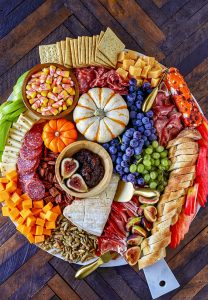 The world has gone mad for a good charcuterie. It’s the simplest meal to make, it’s easy to clean up, and the flavor combinations are vast and out of this world. Eating it can make you feel like the classiest lady of the manor, or Jeremiah Johnson scarfing jerky out of his saddlebags. It’s just so versatile. Chef Michael Durette of Lemon Bay Golf Club will be presenting this popular dish, and we can’t wait to see what he has in store.
The world has gone mad for a good charcuterie. It’s the simplest meal to make, it’s easy to clean up, and the flavor combinations are vast and out of this world. Eating it can make you feel like the classiest lady of the manor, or Jeremiah Johnson scarfing jerky out of his saddlebags. It’s just so versatile. Chef Michael Durette of Lemon Bay Golf Club will be presenting this popular dish, and we can’t wait to see what he has in store.
The word alone is pretty awesome. The French words for “flesh” (chair) and “cooked (cuit) have been combined to give us the name of one of the best culinary experiences one could ask for. In the 15th century this word would be prominently placed on businesses that sold products made from pork, especially pork offal.
Originally a charcuterie meal included every bit of the pig, excluding the bones. In fact, the word in French actually translates to “pork butcher shop.” In French, the person that prepares the meat is called a Charcutier. Additionally, the English pronunciation of charcuterie varies slightly from the original French. The correct French pronunciation of charcuterie is “shar-coo-tree.” The person who prepares the charcuterie is called Charcutier. 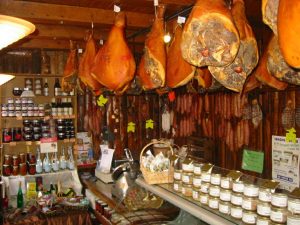
Charcuterie is a branch of cooking involving prepared meats, such as ham, sausage, bacon, confit, or other pork products. Two of the most popular meats in the charcuterie palette are prosciutto (meat from the back leg of a hog that has been salted and air-dried, not smoked, and pancetta, which is almost identical to American bacon that has been salted and air-dried. Salami is another popular meat on the charcuterie tray.
Before we go further, it is important to know that there is a difference between charcuterie and a Salumi tray. A Salumi is from Italy and also refers to salted and dried meats, while a charcuterie was originally made from cooked meats, like pate. In modern times the two have blended together, and that’s all right with us. Most of us take our thinly-sliced deli meats any way we can get them.
 There are many different types of charcuterie, such as pate, jamon iberico, or mortadella. You can do a Rillette charcuterie, which is a meat dish like a pate but slightly coarser, with the meat being slow-cooked until it can be shredded. Rillettes can be served cold or at room temperature, then spread over bread or toast. You can also do a mousse charcuterie, which is a mixture of meat and liver that is blended and strained, creating a creamy texture. You can do a salami charcuterie, which could include the ever-popular soppressata, chorizo or saucisson sec. Lastly, a prosciutto tray is usually made from pork but lamb, duck or other meats that are fatty, cured with salt and air dried can be used.
There are many different types of charcuterie, such as pate, jamon iberico, or mortadella. You can do a Rillette charcuterie, which is a meat dish like a pate but slightly coarser, with the meat being slow-cooked until it can be shredded. Rillettes can be served cold or at room temperature, then spread over bread or toast. You can also do a mousse charcuterie, which is a mixture of meat and liver that is blended and strained, creating a creamy texture. You can do a salami charcuterie, which could include the ever-popular soppressata, chorizo or saucisson sec. Lastly, a prosciutto tray is usually made from pork but lamb, duck or other meats that are fatty, cured with salt and air dried can be used.
The majority of charcuteries that we know are served cold or room temperature, and are paired with fruit, cheese and olives. The idea is that the flavors are supposed to be balanced, such as chewy salami with a smooth pate, and spicy meats with sweet morsels. The crunch of a pickle, for instance, with a smooth-textured duck rillette. A fresh, crisp apple slice with a soft goat cheese. The thick crunch of fresh veggies or orange slices with a fatty salami. There is really no right or wrong, as long as you envision what each taste sensation will be like paired with the others on the plate.
According to the French – and they know a lot about food – each piece of food in the ensemble should be perfect, and blend perfectly with every other piece. We are sure that Chef Durette will make it so.
Seminole Casino
Chef Osmany Acosta,
David Wickline, Jr.
Fine chocolate assortment: Swiss chocolate, praline, hazelnut, nougat
 After sampling the charcuterie spread you may want to stop at Chef Acosta’s booth. The Seminole Casino chef will be bringing more simple, yet fantastic fare in the form of one of the most perfect foods on earth – chocolate.
After sampling the charcuterie spread you may want to stop at Chef Acosta’s booth. The Seminole Casino chef will be bringing more simple, yet fantastic fare in the form of one of the most perfect foods on earth – chocolate.
Chef Acosta will be bringing four taste sensations to his table in the form of Swiss chocolate, praline, hazelnut and nougat. While you may think you know what each of those are, I’m going to bet we can enlighten you to some facts about each you were not aware of.
Let’s start with Swiss chocolate. Many people wonder why Switzerland is so tied to chocolate, and the answer is simple: There are a lot of cows there.
No, seriously. This goes back to one of the most influential chocolatiers of all time, a man named Daniel Peter, who lived in Vevey, Switzerland. He created milk chocolate in 1875 after looking out his front door for inspiration. He found it in the many moos. He realized that while dark chocolate was available, the Swiss people truly had a sweet tooth that wasn’t satisfied with a more bitter flavor.
Eventually he found that through condensation of the milk it could be added to the dark chocolate, thereby making it much sweeter and, according to Peter, more nutritious. That fact has been debated in more recent years, as dark chocolate allegedly contains more antioxidants and minerals, has less sugar than milk chocolate and, some say, it helps lower your risk of heart disease and reduces inflammation. Some even say it improves brain function. Truth be told, if you try to Google this fact you are going to find pages of contradictory statements. So just eat it if you like, and don’t if you don’t.
The Swiss certainly like it. Studies show that, on average, the average Swiss resident consumes about 24 pounds of chocolate each year. They are beaten out only by the Germans, who purportedly consume 25 pounds each year. How they figured this we’re not sure, but those same studies say that Americans only consume about 11 pounds of chocolate each year and that just doesn’t sound right.
By the way, Daniel Peter’s father-in-law was a man named François-Louis Cailler, the so-called creator of chocolate as we know it today. Cailler’s chocolate factory was opened in 1819, and not long after Peter’s chocolate took off in popularity it was incorporated into Cailler’s chocolate industry … one known today as Nestle.
Another man, Rudolph Lindt, was a Bernese chocolatier who was prolific in the field of chocolate. He invented what is called the “conching” process of making chocolate, by accidentally leaving a batch of his chocolate mixing overnight. Conching makes the chocolate more smooth and creamy.
Another interesting fact: While Switzerland’s chocolate industry gives jobs to more than 4,500 people, imported chocolate makes up more than 40 percent of all the chocolate consumed in Switzerland. And, Switzerland’s chocolate output accounts for only one percent of the world’s cocoa harvest.
There are four main ingredients in milk chocolate: cocoa, cocoa butter, sugar and condensed milk; and three ingredients in dark chocolate: cocoa, cocoa butter and sugar. The first step in making chocolate is to roast the cocoa beans, which separates the cocoa from the cocoa butter. The raw ingredients are mixed, melted, cooled and pulverized. That mixture is rolled through giant machines, because the tinier the particles of chocolate are, the creamier and better the taste will be.
After the powder is spun in metal drums for at least 24 hours, the friction in the drum raises the temperature of the chocolate powder and melts everything together. This is what conching is. While dark chocolate is conched for 48 hours, milk chocolate is conched for about 24 hours.
Finally, the mixture is poured into molds and prepared for sale. After that it enters our mouth holes and we munch contentedly.
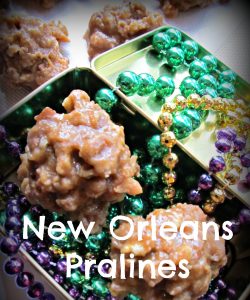 As far as pralines, most people think of the southern United States when they hear the word. New Orleans, especially, is famous for praline candy; it is literally the state’s official sweet. No one knows for sure where the name or the candy originally came from, but the speculation on the street is that it was a French diplomat from the 17th century, César, duc de Choiseul, comte du Plessis-Praslin, who named the candy after himself (his name is as much of a mouthful as a praline nest). The creator of the praline is believed to be his personal chef, Clement Lassagne, but there are others who lay claim to being the inventors of the sweet treat.
As far as pralines, most people think of the southern United States when they hear the word. New Orleans, especially, is famous for praline candy; it is literally the state’s official sweet. No one knows for sure where the name or the candy originally came from, but the speculation on the street is that it was a French diplomat from the 17th century, César, duc de Choiseul, comte du Plessis-Praslin, who named the candy after himself (his name is as much of a mouthful as a praline nest). The creator of the praline is believed to be his personal chef, Clement Lassagne, but there are others who lay claim to being the inventors of the sweet treat.
The original praline was made of almonds and a creamy, sugary, caramelized coating. You must keep in mind that European praline is far different than one in America. In Belgium and France, praline is a smooth paste of cocoa blended with finely ground nuts and used to fill chocolate bon-bons. What changed it when it came to America was, like for many of us, a trip to New Orleans.
Some say that pralines were brought over from France by the Ursuline nuns, who came to New Orleans in 1727. They were in charge of the “casket girls,” which were young ladies who were brought from France to New Orleans to marry New Orleans’ colonists. The girls brought all of their possessions with them in odd little boxes that many thought looked like caskets. As the nuns instructed them on how to be nice girls and upstanding ladies in society, they taught the girls nice innocuous hobbies like praline making.
Modern day New Orleans pecan pralines are not very different than the ones made one hundred years ago, with the common factors being dairy, sugar and pecans.
There are some who say even the New Orleans praline’s shape — the way it hardens into a little brown puddle with pecans randomly jutting up across its murky topography — seems to evoke the swamp, if, say, it froze over and all its spooky cypress knees were forever preserved in time.
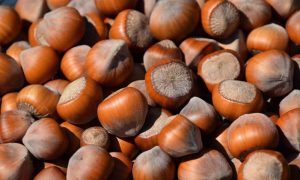 If you’re a fan of hazelnuts, you might know that these nuts are also described as filberts or cobnuts, but do you know why?
If you’re a fan of hazelnuts, you might know that these nuts are also described as filberts or cobnuts, but do you know why?
The connection Between hazelnuts and Filberts is Catholic in nature, as hazelnuts are usually ready for harvest right about the same time as feast day, or celebration, for France’s St. Philbert, which is August 20.
Just to be argumentative, some historians believe the term filbert derives from the German vollbart. The word means “full beard,” which the husked shell of the hazelnut resembles. Although the terms filbert and hazelnut are used interchangeably, filbert typically refers to commercially cultivated crops of hazelnuts.
Hazelnuts may be filberts in Europe, but here we call them cobnuts or just “hazels.” Some say that cobnuts are a different variety of hazelnut, but any distinctions are hard to see once the nuts are shelled. They are too difficult to tell apart with the naked eye alone.
The U.S. hazelnut capital is the state of Oregon – the state grows approximately 98 percent of hazelnuts cultivated in America.
 Lastly, Chef Acosta will be serving nougat, a classic confection made from honey, egg whites and almonds. Many countries claim they founded this tasty concoction first, but it’s hard to tell as variations are found in Italy, France, Spain and the Middle East. Some trace it back to the Romans in the ancient writings of the Roman epicure, Apicius from 1st-century AD, whose notes were used for the ancient cookbook, De Re Coquinaria from the 4th-century AD. Perhaps more likely is the fact the Arabs made it first, as they have cultivated various types of nuts (almonds, pistachios, walnuts), honey and sugar for centuries.
Lastly, Chef Acosta will be serving nougat, a classic confection made from honey, egg whites and almonds. Many countries claim they founded this tasty concoction first, but it’s hard to tell as variations are found in Italy, France, Spain and the Middle East. Some trace it back to the Romans in the ancient writings of the Roman epicure, Apicius from 1st-century AD, whose notes were used for the ancient cookbook, De Re Coquinaria from the 4th-century AD. Perhaps more likely is the fact the Arabs made it first, as they have cultivated various types of nuts (almonds, pistachios, walnuts), honey and sugar for centuries.
While there are literally dozens of variations, perhaps hundreds, they generally fall into soft and hard versions. This being adjusted by the ingredients and length of cooking time. Versions of nougat made with honey tend to be softer, while the sugar versions are harder, even brittle. There is even an American derivative version called divinity fudge, made from corn syrup.
Nutritionally, nougat, like many candies, is all sugar, carbohydrates and empty calories. Low in saturated fat and sodium, it’s not the absolute worst thing for you, but it also isn’t great. But the next time you bite into a nougat, at least you’ll know what it is.
3rd Street Bistro
Executive Chef Tom O’Shields
Ahi Tuna Tacos, Baguette sandwiches, Boca Grande Salad, Shrimp avocado and grapefruit on baby greens w creamy dill and grapefruit dressing
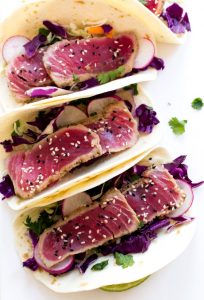 Let’s begin with the Ahi tuna, or yellowfin, which comes from pelagic waters of tropical and subtropical oceans everywhere. It is absolutely loaded with protein – a six-ounce serving has approximately 41.5 grams of protein within. It also contains vitamin D and phosphorus. It won’t make you glow in the dark, which would be very cool, but it will keep your bones strong.
Let’s begin with the Ahi tuna, or yellowfin, which comes from pelagic waters of tropical and subtropical oceans everywhere. It is absolutely loaded with protein – a six-ounce serving has approximately 41.5 grams of protein within. It also contains vitamin D and phosphorus. It won’t make you glow in the dark, which would be very cool, but it will keep your bones strong.
According to a web site called Hawaii Seafood, in Hawaii, “ahi” refers to two species, the yellowfin tuna and the bigeye tuna. It has a slimmer profile than the bigeye tuna, with distinctive soft dorsal and anal fins and finlets are bright yellow.
The dorsal and anal fins tend to lengthen with age. Smaller yellowfin are also called “shibi” in Hawaii. Yellowfin tuna has flesh coloration that ranges from pink in small fish to deep red in large fish. Large fish have greater potential to have a higher fatcontent than smaller fish, a desirable attribute for raw fish products, as well as for searing and broiling.
Fish landed in Hawaii range from
three to well over 200 pounds.Smaller fish are usually caught around fish aggregation buoys and over seamounts. The large fish (over 100 pounds) are usually caught in deep open ocean waters. They are preferred for their typically higher fat content and greater yields.
In order to please more people in the crowd, Chef O’Shields has decided to incorporate baguette sandwiches in his menu as well.
I mean, can you REALLY beat a good ol’ sammich?
A traditional French baguette sandwich is ham and cheese (purists say cheese is not allowed in the traditional version, but we don’t know which side of the fence Chef O’Shields is on) and bread swiped with butter, which lends flavor but is spread lightly to keep the sandwich from getting soggy.
The first “jambon-buerre” made its way to the marketplaces in les Halles market in the 19th century, so that goes to show you can’t keep a good sammich down.
 We’re going to let the Boca Grande salad be a mystery to you if you’ve never had it before, but a hint we will give: It may or may not have something to do with scallions, lemon and romaine.
We’re going to let the Boca Grande salad be a mystery to you if you’ve never had it before, but a hint we will give: It may or may not have something to do with scallions, lemon and romaine.
If that doesn’t help, we’ll just have to see you at Taste and help you find the 3rd Street Bistro table.
Boca Grande Club
Chef Greg Foos
Spicy ahi tuna poke with citrus-soy vinaigrette, jasmine rice, pickled veggies, avocado mousse, sweet soy, spicy mayo, scallions, micro wasabi green tea, citrus & crystalized ginger sorbet
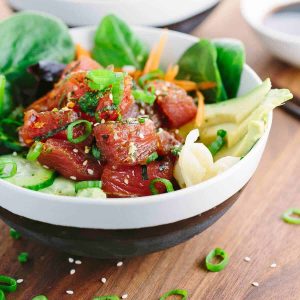 Chef Greg Foos will be bringing it to ‘Taste’ big time, with some tried-and-true favorites that everyone loves.
Chef Greg Foos will be bringing it to ‘Taste’ big time, with some tried-and-true favorites that everyone loves.
We covered ahi tuna, but just to explain the poke deal, here we go:
It is pronounced po-KAY, by the way, and is a Hawaiian way of preparing the ahi tuna by cubing it and marinating it. These cubes can be eaten alone, on a bed of rice, even noodles.
Chef Greg will be serving his with jasmine rice, which is a long-grain variety of fragrant rice. It is always amazing with fish.
Avocados are fascinating little plants (technically berries with a single seed) that are reported to have been consumed by humans since around 5,000 B.C. in Peru. Incan mummies were buried with avocados for goodness’ sake, and can you blame them?
One thing you might now know is that the word “avocado” comes from the Aztec word for “testicle.” There is more to it than that, and a plethora of jokes if you Google what “guacamole” translates to, but I’ll leave that up to you.
So how do you make them into a mousse? Easy – the same way you make chocolate into a mousse. Of course with chocolate, you don’t have to pit and peel the cocoa beans.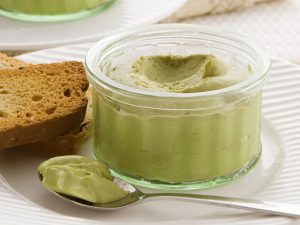
So you put the avocado flesh in the food processor, you add a little lime juice, a little zest, and process it until it is super smooth. Some people add a little cream cheese as well, or gelatin. Lastly, you put the mixture in the fridge and cool it down for at least two hours.
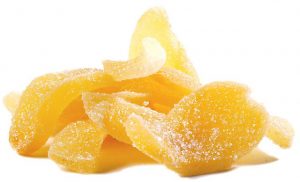 To round out his offering Chef Foos will have a crystallized ginger sorbet in the mix, which is a very good thing for your digestion process. If you ever feel queasy or – ohhhh, say maybe too full – a little ginger is good for what ails you.
To round out his offering Chef Foos will have a crystallized ginger sorbet in the mix, which is a very good thing for your digestion process. If you ever feel queasy or – ohhhh, say maybe too full – a little ginger is good for what ails you.
Maybe you should take a little extra with you to “Taste?”
Boca Bay Pass Club
Chef Michael Klocinski
Jai Alai-braised fresh kielbasa with blaukraut and beet horseradish sauce, cinnamon dark chocolate mousse with caramel corn and chipotle-spiced peanuts
 Wow. Chef Michael Klocinski said a mouthful when he gave us this particular menu. There are a lot of taste sensation in this one, so hang on for the ride.
Wow. Chef Michael Klocinski said a mouthful when he gave us this particular menu. There are a lot of taste sensation in this one, so hang on for the ride.
First of all, don’t let the words “jai alai” scare you off, no one will be throwing hard balls at your head with strange wicker baskets. Jai Alai is an India pale ale with a little citrus bite and notes of tropical fruit. It will be a very interesting addition to Chef Michael’s kielbasa, quite unlike your dad’s beer-soaked version at home.
What is blaukraut? It simply means “red cabbage,” but in German. The beet horseradish sauce is a perfect accompaniment to the braised meat, and will visually complement the blaukraut.
We personally can’t wait to try the cinnamon dark chocolate mousse, which will be a really nice partnership with the umami of the kielbasa. 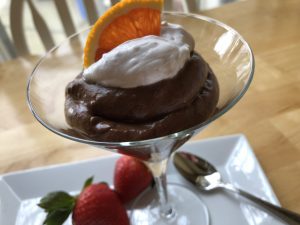
Throwing a little caramel corn into the mix takes us right back to the days of Coney Island and the carnival that came to town … especially when it’s done right like Chef Klocinski will do it. People have been eating it since the late 1800s, and Cracker Jack was introduced in 1893 at the World’s Fair in Chicago.
Just to go off topic for a second (which of course we rarely do here, hah) we found this quote from “What’s Cooking America?” to be very interesting:
There is a legend that old-timers tell of one particular summer when it got so hot that the corn in the fields stared popping right off the stalks. The cows and pigs thought it was a snow blizzard and they lay down and froze to death.
In American Indian folklore, some tribes were said to believe that quiet, contented spirits lived inside of each popcorn kernel. When their houses were heated, the spirits would become angrier and angrier, shaking the kernels, and when the heat became unbearable, they would burst out of their homes and into the air in a disgruntled puff of steam.
Betcha didn’t know that!
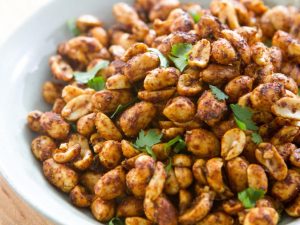 Lastly, Chef Michael will bring out the bar snacks X 10 with chipotle-spiced peanuts. These little devils are peanuts with butter, olive oil, chipotle seasoning, red pepper and sea salt, then baked for a few minutes to absorb the flavor.
Lastly, Chef Michael will bring out the bar snacks X 10 with chipotle-spiced peanuts. These little devils are peanuts with butter, olive oil, chipotle seasoning, red pepper and sea salt, then baked for a few minutes to absorb the flavor.
That wraps up this year’s Taste of Boca Grande menu. Make sure you give everything a “Taste,” even if you’re not sure about it.
After all, that’s what this event is all about!
Marcy Shortuse is the editor of the Boca Beacon, and has been with the paper since 2007. She is also editor of the Boca Beacon's sister publication, Gasparilla Magazine. She has more than 20 years of experience writing and editing local newspapers and is originally from the Chicago area.
Let's block ads! (Why?)
"Taste" - Google News
February 01, 2020 at 01:26AM
https://ift.tt/31fFmRz
A little charcuterie, a little chocolate ... a whole lotta 'Taste!' - Boca Beacon
"Taste" - Google News
https://ift.tt/389gEWa
Shoes Man Tutorial
Pos News Update
Meme Update
Korean Entertainment News
Japan News Update







 Spinach, Shrimp and Grits Soufflé
Spinach, Shrimp and Grits Soufflé Mama’s Egg Salad
Mama’s Egg Salad Cheddar Cheese and Chive Biscuits
Cheddar Cheese and Chive Biscuits LOU’S POPPY SEED CAKE
LOU’S POPPY SEED CAKE BAKED FRENCH TOAST
BAKED FRENCH TOAST











